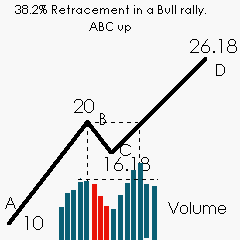Get up, stand up: stand up for your rights!
Get up, stand up: stand up for your rights!
Get up, stand up: stand up for your rights!
Get up, stand up: don't give up the fight!
Preacherman, don't tell me,
Heaven is under the earth.
I know you don't know
What life is really worth.
It's not all that glitters is gold;
'Alf the story has never been told:
So now you see the light, eh!
Stand up for your rights. Come on!
Get up, stand up: stand up for your rights!
Get up, stand up: don't give up the fight!
Get up, stand up: stand up for your rights!
Get up, stand up: don't give up the fight!
Most people think,
Great God will come from the skies,
Take away everything
And make everybody feel high.
But if you know what life is worth,
You will look for yours on earth:
And now you see the light,
You stand up for your rights. Jah!
Get up, stand up! (Jah, Jah!)
Stand up for your rights! (Oh-hoo!)
Get up, stand up! (Get up, stand up!)
Don't give up the fight! (Life is your right!)
Get up, stand up! (So we can't give up the fight!)
Stand up for your rights! (Lord, Lord!)
Get up, stand up! (Keep on struggling on!)
Don't give up the fight! (Yeah!)
We sick an' tired of-a your ism-skism game -
Dyin' 'n' goin' to heaven in-a Jesus' name, Lord.
We know when we understand:
Almighty God is a living man.
You can fool some people sometimes,
But you can't fool all the people all the time.
So now we see the light (What you gonna do?),
We gonna stand up for our rights! (Yeah, yeah, yeah!)
So you better:
Get up, stand up! (In the morning! Git it up!)
Stand up for your rights! (Stand up for our rights!)
Get up, stand up!
Don't give up the fight! (Don't give it up, don't give it up!)
Get up, stand up! (Get up, stand up!)
Stand up for your rights! (Get up, stand up!)
Get up, stand up! ( ... )
Don't give up the fight! (Get up, stand up!)
Get up, stand up! ( ... )
Stand up for your rights!
Get up, stand up!
Don't give up the fight! /fadeout/
The lyrics for this 1973 track were written by Bob Marley and Peter Tosh who were influenced mainly by their Jamaican upbringing. The song is basically about the fight for acceptance of their Rastafarian religion and the need to take action to avoid oppression, however, much of the inspiration appears to have come from another song `Slippin' Into Darkness' by War.
The meaning behind the lyrics can be interpreted as both religious and anti-religious depending on your point of view. On one hand, the line, `Get up, stand up: stand up for your rights,' can be seen as a rallying call to stand up and demand respect for the Rastafarian religion. On the other hand, the lines, `Preacher man don't tell me, heaven is under the earth, I know you don't know, what life is really worth,' suggest hanging on to freedom of thought rather than the words of religious leaders.
In the track by War, the lyrics warn of the thin line between sanity and insanity and how your own thoughts can be enough to push you over the edge into darkness. In this song, the lyrics tell us that religion can also be responsible for altering the way some people think with the lines, `Alf the story has never been told, so now you see the light, eh!'
There may well be some underlying political as well as social undertones but the main message in the lyrics is to live for the here and now; not to wait for the promised ever after.


